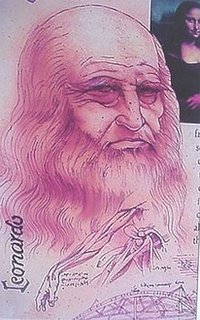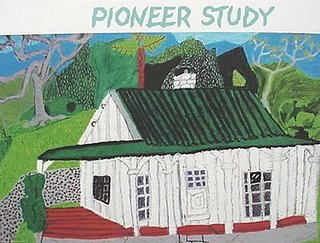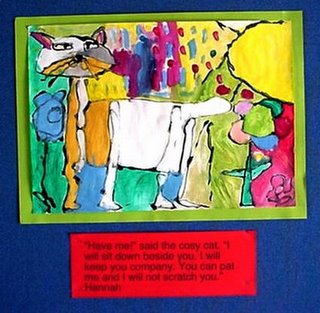
 Last week at the Annual Meeting of the Post Primary Teachers Association it was reported that ‘classroom violence was rife’ and ‘student behaviour shows sharp increase.’
Last week at the Annual Meeting of the Post Primary Teachers Association it was reported that ‘classroom violence was rife’ and ‘student behaviour shows sharp increase.’No doubt that the worst of these schools would be found in the low decile schools found the low socio economic areas of the country but all school are having their problems. Teachers, it was reported, were ‘fed up with classroom violence’ and outlined a range of ‘horror stories’ about ‘disruptive, dangerous and negative behaviors’; a survey evidently had found at least ‘10% of teachers had been physically assaulted or had witnessed an assault’. There is no doubt that these students are ‘time bombs who threatened other students and teachers’ and that something has to be done. The teachers ‘had had enough’ and were reported as saying that they were dealing with ‘behaviors we haven’t any answers for’
Our local paper continued the story teachers saying, 'violence in our classrooms is rife’ and reported that many principals were ‘turning a blind eye’ because ‘it reflected badly on their schools’. Students interviewed, some from the so called ‘better schools’, reflected that students also were sick of the poor behaviour of some fellow students and that there needed to be ‘more respect shown for each other’. Mutual respect seemed an important suggestion by the students.
An earlier article in our paper reported the number of students ‘stood down’ for assaulting doubled over the past year (to 31). Standowns are preferred by the Ministry because ‘it was a more active way of managing student behavioral issues and causes less disruption to the students learning’. Wonderful ‘Ministry speak’. 75% of standowns involved boys and I guess a good number of these are Maori students? Add to all this that approximately 20% of all students leave with minimal qualifications to show for the time at school and we have a problem that can't be ignored or solved by more of the same.
For such a serious problem possible solutions were less forthcoming, ‘more resources, training and funding for counseling services’,all akin to ‘rearranging the deck chairs on the Titanic’.
No where in all of this did the teachers' union, local principals, or students, suggest that they might be part of the problem. It seems that it is all the problem of the students themselves or a reflection of wider society problems. While not excusing the students, or downplaying society effects, there is a lot that schools could do rather than retreating into ‘deficit thinking’.
If any business showed such poor attitudes amongst their workers, or turned out faulty ‘products’, then they would go out of business. You have to wonder how bad it has to get before secondary schools take their heads out of the sand and face the reality that their own structures, teaching methods and attitudes might be as dysfunctional as the students they are quick to blame?
How many schools have taken the advice of research and good practice to actually listen to their students? How may have tried to personalize learning around the needs of their students rather than insisting students 'learn' what they obviously dislike. Bill Gates has written that American High Schools are obsolete, designed in and for a past industrial age, and need to focus on 'relationships, relevance and rigor’. How many schools have redesigned their structures to allow collaborative teaching and student teamwork? How may schools have had their teachers reflect on their teaching methods and introduce approaches that have proven, when tried, to re –engage students? How many schools give students real choices and value their ‘prior ideas’ before rushing in to teach? How many schools have integrated modern information technology so as to involve students in searching for the answers to their own questions? How many schools have reflected on the purpose of schooling in the 21stC; that it might be about ensuring all students have a need to achieve personal meaning, recognition, autonomy, a sense of belonging and appositive self image as a learner. How many have thought that by focusing on realizing the multiple talents students bring with them may be more preferable to imposing ideas passed down from on high? And how many schools have met, as equals, with their communities, particularly with the cultural groups that are currently finding schooling problematic? And wouldn’t it be great if the Ministry established some way of listening to our more creative and innovative citizen, many of whom had less than wonderful school experiences, to see how they might design a modern school to realize the talents of all students?
I know that all these ideas exist in some schools somewhre but the future is spread to thinly! It is ironic that schools are not in themselves ‘learning organizations'. Until they become ‘communities of inquiry then the problem of poorly behaved students will continue to escalate. Having visited a number of secondary classrooms I can’t say I blame students for at least being bored!
If you don’t believe me visit your local secondary school and go for a tour down the corridors and peer into classrooms – I would be surprised if it looked very different than when you were a students, or your grandparents.
What other institution is so dedicated to the past?
When there is so much we now know about people learn, and the conditions required to do so, it is all rather sad. If we listened to the pain of the very students the schools complain about we might find an answer! School need to be re-imagined so that teachers and their students can rediscover the joy of learning. At least we could establish a range of alternatives to test out some of the ideas but this would require local and national courage and leadership?
Whatever we will have to change our collective minds first before we focus on the students.
At least read David Hood’s book.
Or visit the Big Picture Website

















